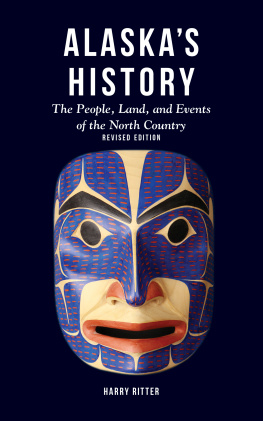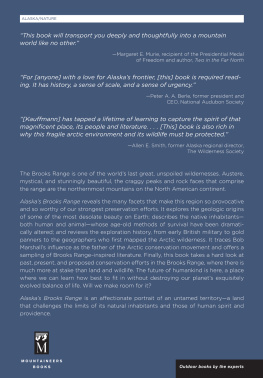
ALASKAS HISTORY
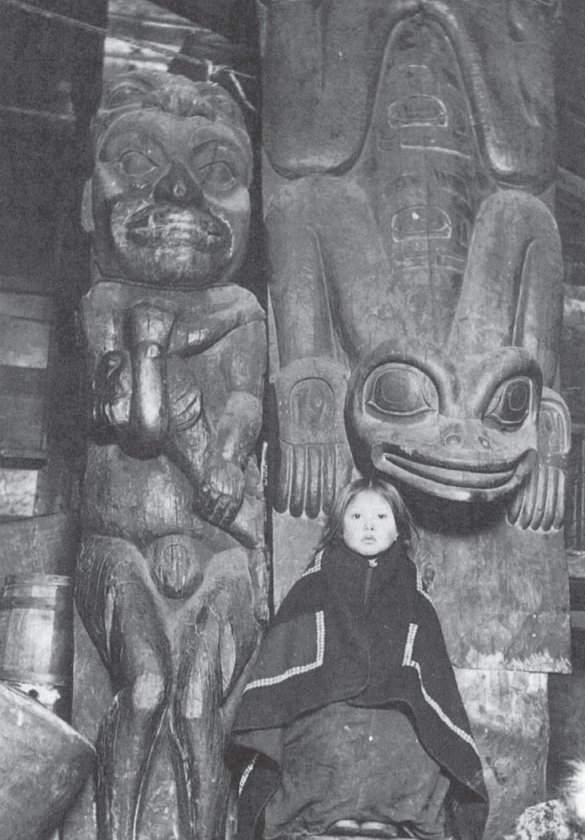
Tlingit girl with ancient totems. Winter and Pond photo, about 1895.
ALASKAS HISTORY
The People, Land, and Events of the North Country
REVISED EDITION
HARRY RITTER

Text 2020 by Harry Ritter
Copyright to archival photographs and
illustrations as credited on pages 150151
Revised Edition first printed in 2020
All rights reserved. No part of this book may be reproduced or transmitted in any form or by any means, electronic or mechanical, including photocopying, recording, or by any information storage and retrieval system, without written permission of the publisher.
Library of Congress Cataloging-in-Publication Data
Names: Ritter, Harry, author.
Title: Alaskas history : the people, land, and events of the North Country / Harry Ritter. Other titles: People, land, and events of the North Country
Description: Revised edition. | [Berkeley, California] : West Margin Press, [2020] | Series: WestWinds Press pocket guide | Includes bibliographical references and index. | Summary: A travel-sized history book on Alaska, with up-to-date information and historical photographs about the Last Frontiers past and presentProvided by publisher.
Identifiers: LCCN 2019026002 (print) | LCCN 2019026003 (ebook) | ISBN 9781513262727 (paperback) | ISBN 9781513262734 (hardback)| ISBN 9781513262741 (ebook)
Subjects: LCSH: AlaskaHistory.
Classification: LCC F904 .R58 2020 (print) | LCC F904 (ebook) | DDC 979.8dc23
LC record available at https://lccn.loc.gov/2019026002
LC ebook record available at https://lccn.loc.gov/2019026003
Cartographer: Vikki Leib
Indexer: Sheila Ryan
Cover: The Trickster, David Boxley, Tsimshian, 1988. Private collection.
Proudly distributed by Ingram Publisher Services.
Published by Alaska Northwest Books, an imprint of West Margin Press

WestMarginPress.com
WEST MARGIN PRESS
Publishing Director: Jennifer Newens
Marketing Manager: Angela Zbornik
Editor: Olivia Ngai
Design & Production: Rachel Lopez Metzger
Desgin Intern: Michelle Montano
CONTENTS
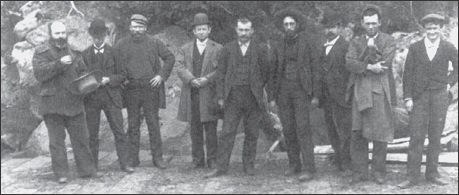
Residents of Skagway, 1898, including Soapy Smith (fourth from the right).

Mount Katmai on the Alaska Peninsula, one year after its great eruption of June 6, 1912 (see p.96)
ACKNOWLEDGMENTS
Among the people who have nurtured my interest in Alaskas history, sometimes unknowingly, I wish to thank in particular Darrel Amundsen, Monty Elliot, Gary Ferngren, and Sue Hackett, as well as Ron Valentine, Director of Operations of World Explorer Cruises. I am especially indebted to Marlene Blessing and Ellen Wheat of Alaska Northwest Books for supporting the idea of a popular history of Alaska, and to Betty Watson for designing the book. In the later stages of writing, Nolan Hester provided invaluable editorial suggestions which resulted in a much-improved manuscript. Ted C. Hinckley, Catherine and Bill Ouweneel, and Roy Potter kindly agreed to read the manuscript in its late form. I also wish to thank Richard Engeman and the staff of the Special Collections Division of the University of Washington Libraries, India M. Spartz of the Alaska Historical Library, Marge Heath of Rasmuson Library at the University of Alaska/ Fairbanks, Toni Nagel of the Whatcom Museum of History and Art, Ken Southerland of Sealaska Corporation, Sara Timby and Linda Long of the Special Collections of Stanford University Libraries, Mike Connors of the Port of Bellingham, Fred Goodman of Bellingham, Doug Charles of the Totem Heritage Center in Ketchikan, and several colleagues at Western Washington University: Janet Collins, Gene Hoerauf, Ed Vajda, Ray McInnis, Virginia Beck of Wilson Librarys Special Collections, and especially Jim Scott, Director of Westerns Center for Pacific Northwest Studies.
For the books second edition, I want to thank Jennifer Newens and the West Margin Press team for inviting me to undertake the revision. Very special thanks, as well, to Tricia Brown and Leza Madsen for their helpful suggestions.
Thanks, above all, to my wife, Marian, and son, Alan, without whose inspiration and support this book would not have been written.

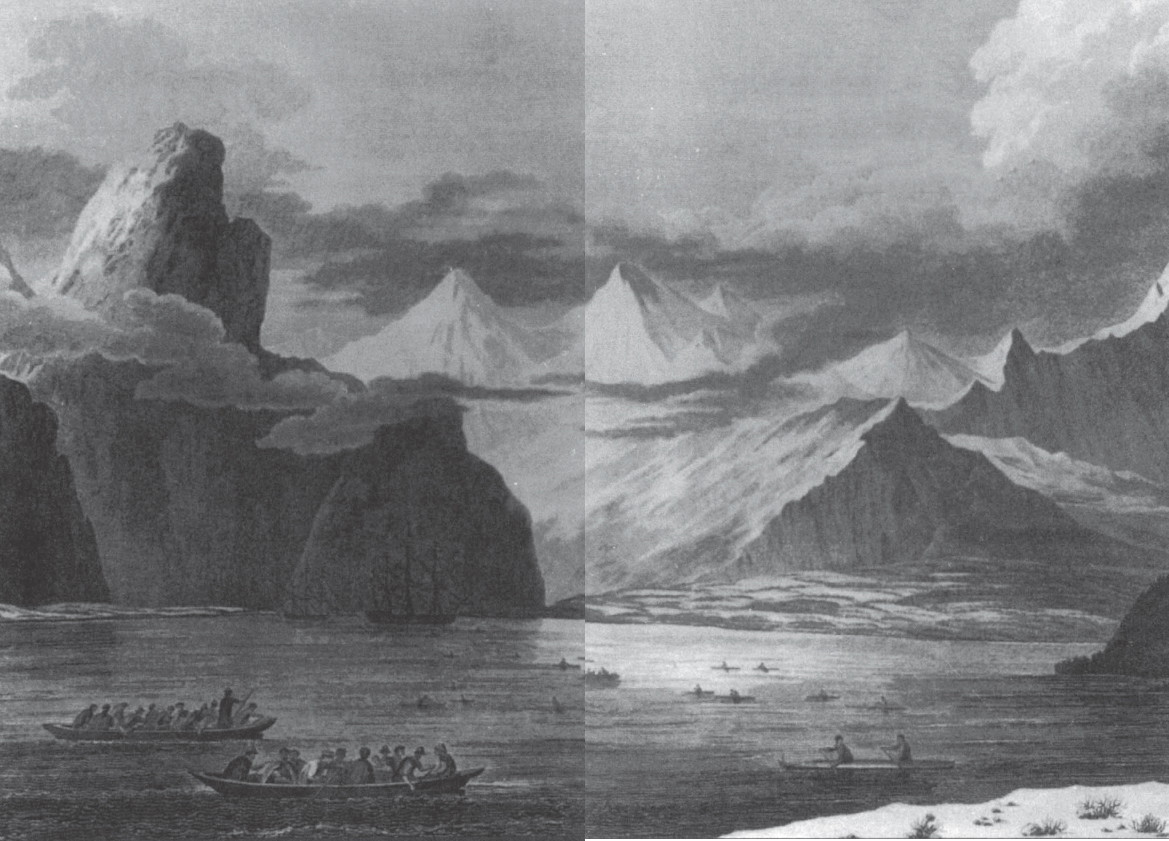
Snug Corner Cove, Prince William Sound. Drawing by John Webber, 1778.
ALASKA: THE GREAT LAND
ALASKA, PAST AND PRESENT
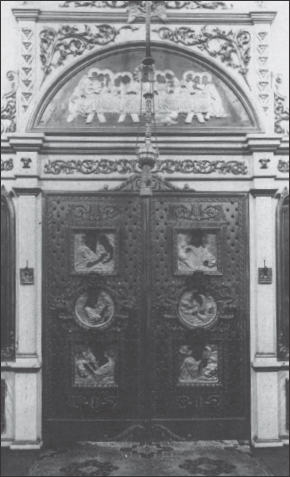
Gold and silver doors, St. Michaels Cathedral, Sitka, late 1800s.
Alaskas human historyfrom the prehistoric arrival of the earliest Siberian hunters to todays Arctic Slope oil explorationis unified by one simple but grand theme: peoples efforts to wrest a living from the regions vast natural riches despite its extreme conditions.
Nature endowed the Great Land with wealth, scenery, and a scope surpassed by few regions of the earth. Alaska is a virtual subcontinent: Twice the size of Texas, it contains 16 percent of the United States land area. But its population remains small. At the time of the U.S. purchase in 1867, Alaska had about 30,000 people, more than 29,000 of them Native American. By 2018, despite statehood and the oil boom, its population had grown to an estimated 738,000.
Over the past 275 years, Alaska has seen a series of boom-and-bust rushes to exploit the land: rushes for fur, gold, copper, salmon, and oil. Some people came and stayed, simply because Alaska is like nowhere elsewild, extreme, and amazing. Still, the aim often has been to take the rewards of the land and sea, then enjoy them somewhere else. Many Alaskans see a recurring theme of neglect by federal authorities and exploitation by outside interests. While the notion is easily exaggerated, the fact remains that today, decades after becoming a state, much of Alaskas economic fate remains under control of the Lower 48. Much of the Alaska fishing fleet, for example, is based not in Alaska, but in Washington state.
Over the past six decades, the development of a modern tourism industry has brought millions of visitors to the once-remote frontier in a veritable tourist rush. The more daring travelers motor north via the Alaska Highway, built during World War II. But most come by air or sea. The state-owned ferry system, the Alaska Marine Highway, has linked southeastern Alaska to British Columbia and Washington state since the 1960s. Each year, thousands of ferry travelers experience the stunning sea and landscapes of the Inside Passage. In the 1970s, the cruise ship industry met that same growing tourist demand by offering summertime excursions to the icy spectacles of Glacier Bay National Park and the Gulf of Alaska.
Next page
